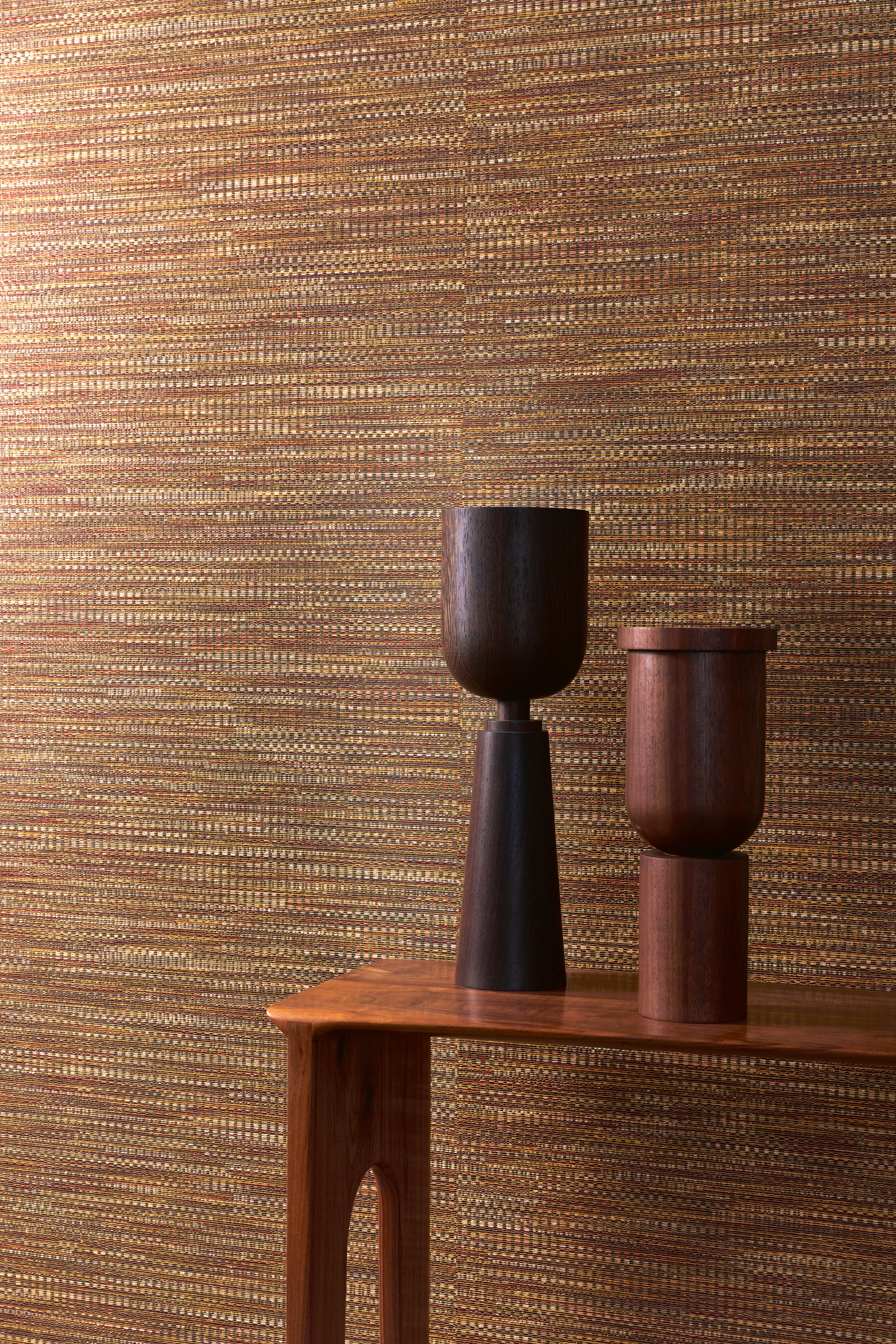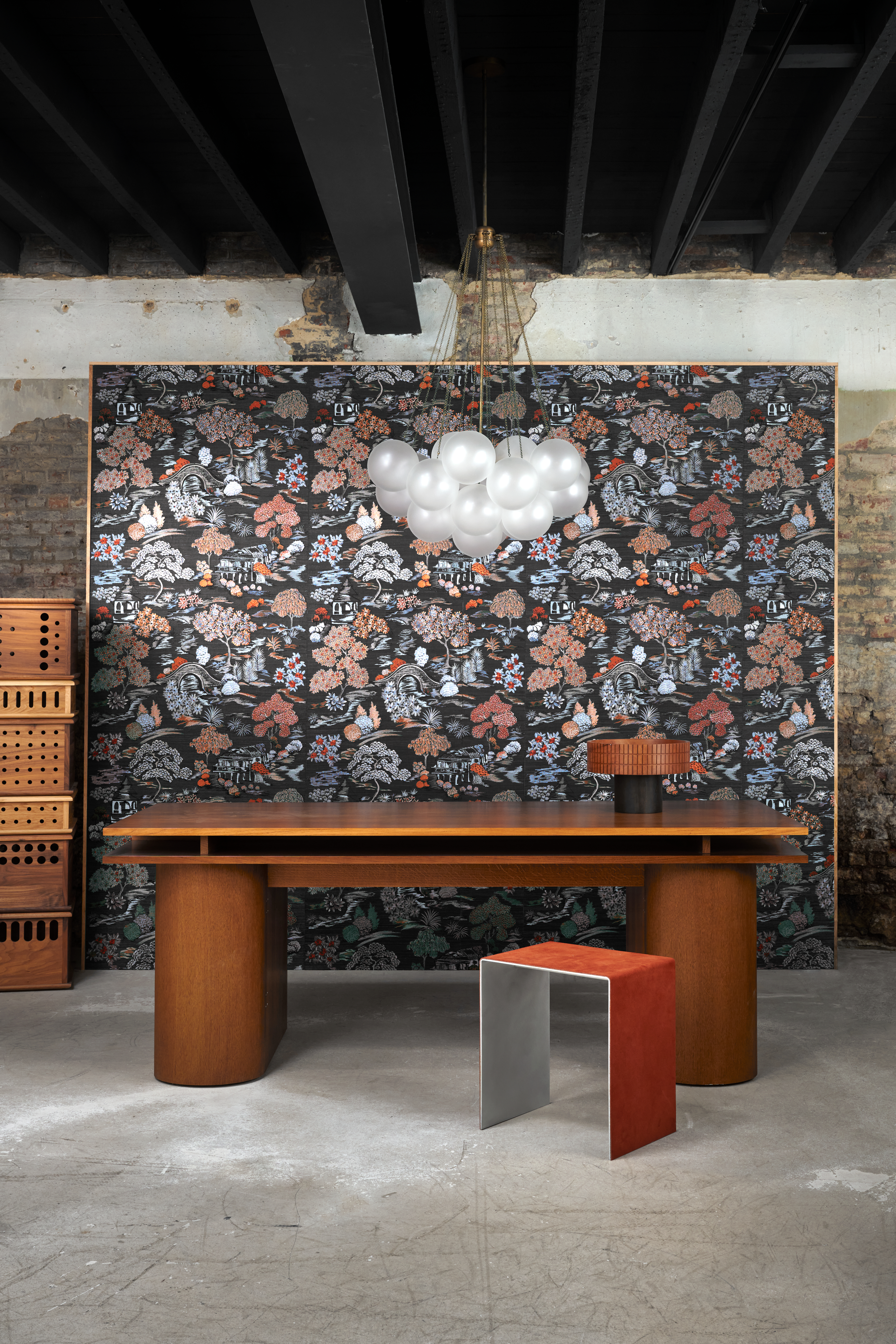This collection exudes refinement and luxury, not only through the sophisticated embroidery technique but also due to the use of natural materials such as sisal, cotton and hemp. The aesthetic aspect and purity of nature are in perfect balance. The materials, designs and colours in this collection refer to the Far East.
Osmanthus is a shrub with fragile flowers that plays an important role in Asian culture. From perfumes and culinary applications to legends and cultural festivals, these fragrant flowers are appreciated for their aroma, flavour and beauty.
Chasu
The Korean word for embroidery is Chasu, which is very appropriate for this refined pattern. The abstract herringbone pattern is embroidered onto a natural sisal background using shiny textile threads, giving an effect that is both luxurious and authentic.
Tatami
Tatami means folded and stacked in Japanese, referring to the way in which traditional Japanese floor mats are manufactured. The substrate of this design is a playful reference to this authentic technique. The shiny geometric embroidery perfectly comes into its own against this background.
Gardens of Okayama
This colourful Japanese garden has been carefully embroidered with great attention to detail onto this base of sisal fibres, with the different shades of the threads revealing its natural character. The fairy-tale scene appeals to the imagination.
Kudzu
The fibres of the climbing plant kudzu, which is very common in tropical regions, are coarsely woven into a unique wallcovering. The irregular thicknesses and different shades of the various threads reveal its natural origins.
Sambe
This design is made of hemp fibres whose natural colours contrast with the fine black yarns that hold the fibres together. The knots and irregular threads of different thicknesses are clearly visible and this is what makes Sambe so authentic and pure.
Geloma
Geloma is a refined jacquard-woven textile in glossy multicolour threads. The dancing horizontal lines create a playful effect on the one hand, while the dark background and warp provide relief on the other. This design owes its name to the word ‘loom’, which in turn comes from the Old English word 'geloma'.





